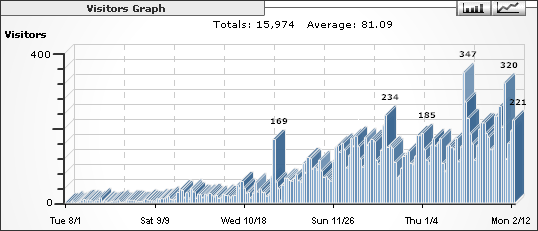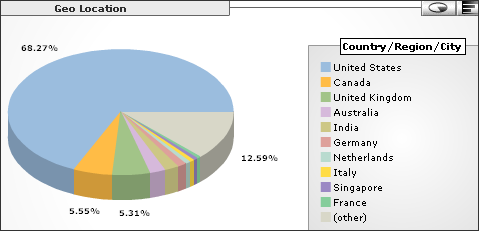Great List of 15 Things to Help Your Career
I’m a big advocate of doing simple things to help the bigger picture. In many endeavors, a lot of tiny steps can produce a huge result.
Careers are like this. A successful career is usually made up of many small steps. True, there are large ones as well. However, the everyday things usually contribute a ton to the whole.
Thus, here’s a great list of 15 easy things you can do to help your career.
My favorite idea from the list is to design your own business cards. These shouldn’t be tailored to a particular job, but to your overall image. In fact, I’ve written about this precise concept over at Job Tuition. Also, I think law students should have business cards as well; I’ve written about that here at Legal Andrew.
So go check out the list and do something to help your career!
[tags]legal andrew, career, the simple dollar[/tags]
Get more legal tips
|
See also... |
GTD: My View – Thoughts on GTD and Students
 |
This is Part 3 in a series of posts on getting things done. “GTD: My View” covers how I implement GTD, specifically focusing on being a student. Be sure to check out Part 1 and Part 2.
The last post in this series received a great comment, seeking to understand more about students and GTD. I posted a reply, but I also want to highlight some more thoughts.
Students do more than class
A common thing people forget is that being a student is more than just going to class. Students must juggle a variety of demands on their time, and GTD helps accomplish this.
For example, most students are involved in some type of extracurricular activity. These usually entail responsibilities that can be managed with GTD. Maybe you have objectives to pursue as the president of a club. Perhaps you just need to buy snacks for an upcoming meeting. GTD will help with both of these!
Students are people too
On a similar note, students must perform the basic tasks required within society of all people. We need a place to live, must pay bills, maybe get a part-time job, etc.
Thus, if GTD works for non-students, why shouldn’t it help students too? There’s a certain base-line set of things that everyone has on their mind. The point of GTD is to get them off our minds, so we can focus on the task at hand and just crank widgets.
GTD can help everyone
The final point to make on this topic is that everyone can benefit from GTD. Whether your work takes you to the construction site, classroom, or office, GTD can streamline your life. That’s one beautiful part of the system!
The Series – “GTD: My View”
- Part 1 – Pick a System
- Part 2 – Dealing With School Work
- Part 3 – you’re reading it
[tags]legal andrew, gtd[/tags]
Get more legal tips
|
See also... |
GTD: My View – Dealing With School Work
 |
This is Part 2 in a series of posts on getting things done. “GTD: My View” covers how I implement GTD, specifically focusing on being a student. Be sure to check out Part 1.
It’s no secret that I’m a law student. Part of my goal in blogging is to collaborate with other students on ways to be more productive. That’s one key theme of Legal Andrew.
What is a school assignment?
In my school experience, there are a couple main types of work to do: reading and projects. In virtually every class I’ve had, all of these assignments have due dates attached to them.
Reading is pretty self-explanatory. The key thing to recognize is that it is an assignment. It’s something students have to do. And, as I noted above, reading assignments have due dates by which they need to be completed.
Projects can include a variety of things. In law school there aren’t many of these, but you might have a paper, a brief, or a motion to draft. Maybe you have a speech to prepare. You get the point. As with readings, these have due dates as well.
The only other school work students do is to study. I don’t generally have to track this in my GTD system. In law school we have a single exam at the end of the semester. A student would be in trouble if he needed a reminder to study during law school exam time.
Where do assignments go?
Now that you’ve identified your school assignments, the key is how to track them in your GTD system. You might be inclined to call them “next actions” and put them on some type of “school” list. I think that’s a bad idea.
Precisely because assignments have specific due dates, they don’t belong on a list. In my opinion, that goes against the essence of GTD. Your lists shouldn’t contain date-tied tasks. Those go on your calendar.
 |
Yep, ALL my school assignments get entered on my trusty Google Calendar. I have a separate “School” calendar setup in Google, so I can color them and see school stuff quickly at a glance. My system is to put school tasks as an “all day event” on the day where they are due. When I complete the assignment, I delete the event.
The final little “hack” to my assignment system is this: I prepend every task with a couple letters to denote the class. For example, “TA” stands for Trial Advocacy.
This all works because reviewing my calendar is part of my daily review and work-flow. As students, we know that we have school assignments to do. It’s simply a matter of checking the calendar and seeing what assignments are coming up. Then I dig in and do them. The beauty of this system is that my main GTD lists stay clear of mundane school work. They have more important things to track.
If you liked this article, please check out the rest of this series below. Please feel free to comment or drop me a line.
The Series – “GTD: My View”
- Part 1 – Pick a System
- Part 2 – you’re reading it
- Part 3 – Thoughts on GTD and Students
[tags]legal andrew, gtd[/tags]
Get more legal tips
|
See also... |
GTD: My View – Pick a System
 |
This is Part 1 in a series of posts on getting things done. “GTD: My View” covers how I implement GTD, specifically focusing on being a student.
I love getting reader feedback! In fact, I’m writing this series specifically because several of you have asked about my personal system for GTD. Thank you, Andrew L., for the most recent request!
More importantly, you guys are interested in ideas to tailor GTD to the needs of students. Thus, here’s my attempt to help out.
This first post will cover the basics of my personal GTD system. Next, I’ll post some insights on managing those nagging school assignments. After that, we’ll just have to see what happens!
Things I don’t use
Paper – Pen and paper are the bane of my existence. Paper gets lost, ink gets on your hands, you can’t easily re-arrange lists, etc.
Outlook – I used to be addicted to Outlook. My life was stored in there. But I’ve been clean for about 5 months now. It’s slow, too complicated, and made by Microsoft. Enough said.
Thinking Rock – (a free GTD management program) Thinking Rock has potential, and I did use it for about a month. But it required me running another application all the time. My machine can handle it, but I usually ended up neglecting to check my GTD system at all. Bad idea.
Text file – A lot of people swear by this system. The basic method is to just maintain your lists in a big text file. You can also get geeky and use command line kung fu on it. I tried it for a few weeks, but it was too inflexible. Text just didn’t jive with my style.
PDA – For several years I’ve been tied to a Palm PDA. I finally ditched this a few months ago. I got tired of lugging it around, and I realized that my iPod Nano could do just about anything I needed anyway. It’s smaller and lighter!
My current system
I recently adopted MonkeyGTD as the cornerstone of my system. It’s a system based entirely in a TiddlyWiki. (If you have no clue what that means, don’t worry.)
The genius behind TiddlyWiki is that it stores all the content and display info in one page. Thus, you can use your MonkeyGTD online, on your own computer’s hard drive, on a thumb drive, etc. And it will sync back and forth between them!
To see what the newest version of MonkeyGTD is like, check out the alpha demo. You’ll immediately see the dashboard, which is a cool way to view your life at a glance. You’ve obviously got contexts, actions, projects, etc. It’s all there, and very intuitive.
A completely digital system works for me because my laptop is always with me. Well, I do go out some without it, but I rarely need my GTD lists in those instances. If you do need a mobile system, MonkeyGTD might not be your solution.
For mobile note-taking, I have a great system. I call it my “iPoDA.” I have some “super sticky” post-it notes on the back of my iPod Nano. Even though I’m not a pen fan, I stick my Cross pen in my pocket too. Then I can take notes whenever I need to. When I get home, I peel off the sticky note and stick it to my desk for later processing. I’ll definitely write more about this at another time. I love it!
 |
The final two pieces of my main system are Gmail and Google Calendar. They aren’t so much part of the GTD methodology as they are part of my work-flow. I tried GTDGmail, but it didn’t work out for me. I don’t like living in email. The calendar is crucial to productivity, but it really helps by getting date-sensitive things out of the main GTD system.
Thanks for reading this first post in “GTD: My View.” If you liked this article, you can read the rest of the series below.
The Series – “GTD: My View”
- Part 1 – you’re reading it
- Part 2 – Dealing With School Work
- Part 3 – Thoughts on GTD and Students
[tags]legal andrew, gtd[/tags]
Get more legal tips
|
See also... |
Learning From Our Site Statistics
Statistics are a key part of any type of venture. You need to know what’s happening, how your target demographic is responding, and what areas you can improve. The same applies to blogging.
I’m a stats addict
I’ve had several readers ask what statistics I use here at Legal Andrew. The short answer is “any and all.” Well, I’ve tried many solutions. But now I’ve finally found three I love.
I’ve been using Google Analytics since I got serious about blogging. It provides a great overview of everything, along with awesome detail to help feed my addiction.
I was a Performancing Metrics user, but when they closed down, I switched to FeedBurner’s StandardStats package. This is where I get my daily stats fix, since it provides a great glimpse at traffic, including the main site and the RSS feed.
Finally, 103bees has a really neat program to help analyze your keywords, search engine traffic, etc. I don’t check this one often, but it does provide some interesting insights.
You’re a visitor!
I just pulled up an Analytics graph that shows blog visitors from August 1 (’06) through today (February 13, ’07). Here’s the graph, with some key traffic spikes marked:

This graph shows that I’ve been slowly (but steadily) gaining visitors since August. The spikes you see are largely due to group writing projects. However, the 347 number is from my edition of Blawg Review!
What does this data tell me?
- I’m doing something right. Increased visitors means people don’t hate my blog. 🙂
- Playing nice with others helps! Like I just mentioned, most of my big traffic days came from a group project or other community effort. I can’t do this alone.
- I need to work harder. I was seeing large traffic increases in the first few months of serious blogging. But since December, readership has increased only a little. Thus, I’ve got to push myself and see how I can expand the scope.
We’re global
That brings me to the next bit of data I’d like to share with you. As an American, I am very prone to feeling like we are the only continent on the globe. I ignore other languages and cultures, and I generally cater to U.S. readers. But check out this geographic location graph:

As you can see, only about 68% of my readers are actually in the United States. Taking out Canada and Great Britain as well, that leaves 20% of readers who are in other countries around the globe.
This is great news, but it also tells me that I’m neglecting a huge percentage of you readers. I don’t make any effort to connect with you. I’m not a global blogger.
Thus, I’m going to work in the coming weeks to change that. I’ll install a page translator. I’m going to start reading some blogs from other countries (translated into English, since I’m a typical American and can only read that).
I encourage you readers from around the globe to stop by and interact with us. Please provide any thoughts you have on how I can be less insulated and reach out to you more. You can leave a comment or drop me a line.
Get more legal tips
|
See also... |
Am I a White Supremacist for Discussing Politics?
If you haven’t read the work of Penelope Trunk, you definitely should check out her blog. She now even has a column on Yahoo! Finance.
While politics doesn’t come up much on Legal Andrew, I felt compelled to respond to something Penelope wrote today. She posted that we shouldn’t discuss politics at work because it can be racist. In today’s politically correct world, Penelope’s probably right. Even saying that I don’t support an increased minimum wage might offend someone, possibly for an unforeseen racial reason.
 |
But should we be silent?
Just yesterday, some friends and I were discussing that democracy relies on discussion. We need information to make decisions about our government, elections, etc.
Sitting here at Thomas Jefferson’s university, I wonder what ol’ T.J. would think about being silent on politics. Would our country exist if people held their views in, for fear of offending someone? Would we have even declared independence from Britain? I’m sure the Declaration offended a whole bunch of people, but I’m glad the Founders stood up to be counted.
Discuss politely
With that said, there is a time and place for everything. I’m not saying that we should discuss politics any time of the day, especially during the middle of work. However, is it bad to discuss something during lunch? What about a coffee break?
In the proper time, discussing politics at work (or just with coworkers) shouldn’t be offensive. But be sure to tackle sensitive matters in a polite way. Respect differing viewpoints and especially ethnic or cultural backgrounds.
Let’s talk!
Now that I’ve spouted my thoughts, I’d love to hear what you think. Am I being crazy? Do you discuss politics at work? Do you completely stray from it?
Please post a comment or drop me a line.
Get more legal tips
|
See also... |
Lawyers Should Use Buzz Marketing Too!
How do you spread the word about your law firm? Do you take out yellow page ads? Maybe you’ve started blogging. What about buzz marketing?
Today’s marketing tool
Yellow pages are stagnant. Web sites only provide information. Buzz marketing interacts with people and society. It’s today’s marketing tool.
So what is it? Buzz marketing is another term for word of mouth marketing. It’s also known as viral marketing. As Wikipedia explains, “a very successful word-of-mouth promotion creates buzz.”
The power of the internet and blogging makes buzz marketing extremely simple and powerful in today’s society. You can contact a huge network of people in seconds and spread your message around the globe, all from your living room.
Buzz your message
If you’re new to these ideas, Ben Yoskovitz has some great info to help get you started. He recently finished his 3 week buzz marketing challenge, where he did a ton of buzz marketing. Ben also provides a great summary of some major lessons he learned.
If you’re still skeptical, just look at the list of example buzz activities. The first one is to “email an old friend or acquaintance.” How easy is that?!
Good for lawyers too!
Some people gasp when thinking about lawyers marketing. However, isn’t that what lawyers do when networking? The awesome rise of lawyer blogs shows that our profession isn’t blind to marketing.
Lawyers can easily create buzz about themselves and their practices. Do you have a unique perspective on clients? Maybe you’ve had some great success with a particular type of case. This is a great subject for a mini-press release. Perhaps you can send an email out to colleagues and get some coverage on their websites.
The main point here is to leverage whatever power you can find. Don’t dismiss buzz marketing as “not for me.” Understand new ideas and methods of spreading your message. If you don’t use it, your competitors might.
Get more legal tips
|
See also... |
Top 11 Ways to Give by Blogging
One of the awesome things about blogging is that you can give to others so easily. Here are my top (random) 11 ways to give to others by blogging. See how many you can do!
11. Link – This is the basic and simplest way to give something to someone else online. Links are the currency of the internet. They enable us to find each other, but they also have inherent value. Link to someone!
10. Read – We all need more readers and visitors. Why don’t we give a little to each other by reading more?
9. Tell – Besides just linking to others, you can tell your friends about blogs they might like. This is a great way to network and advance your business contacts as well. Plus, you’re giving great traffic and publicity to other bloggers. Everyone wins.
8. Tip – Blogtipping is a great practice where you pick a blog and write a little post about (people usually do three at a time). You write three things you like about the blog, and then you provide one tip to the blogger. Cool.
7. Submit – Social networking sites like digg and del.icio.us provide great ways to support bloggers you like. If you run across a great article, submit it to your favorite social net site. This provides greater exposure to the blogger and connects him with more readers.
6. Comment – Everyone loves a good conversation. That’s what blogging is all about; it’s a conversation that roams around the web. When you comment on another person’s blog, you’re giving a tiny bit of yourself. You’re carrying on the conversation and contributing to something bigger than all of us.
5. Review – Aside from blogtipping, you can flat out review another blogger’s work. There’s no prescribed format for this, just to be polite. Quote, screenshot, link, and add your thoughts.
4. Thank – Sometimes a simple “thank you” goes a long way. If someone did something nice for you, give them an online thanks in return. It’s polite, public, and really gets your message across. [Speaking of which, our LexisNexis rep thanked me for my article about earning points via short exercises. It’s cool how things get back to people.]
3. Connect – Relationships are powerful. You can give a person this powerful asset by connecting her with a like-minded blogger. That’s what networking is all about.
2. Advocate – Don’t forget the power of your blog itself. You can give to a worthy cause or person by advocating through your blog. Promote charitable giving or social action.
1. Inform – Education is a great gift. Even if you’re just giving a small lesson about a discrete topic, that still empowers your reader. Blogs perform this task incredibly well, and they inform people about their world. Give the gift of knowledge.
What are you waiting for? Try some of these ways to give to others. Do you have any to add? Leave a comment or drop me a line.
[tags]legal andrew[/tags]
Get more legal tips
|
See also... |
Next Actions 101 – Rephrase Dormant Tasks to Spur Action
 |
This is Part 3 in the “Next Actions 101” series (read Part 1 and Part 2).
We’ve already covered next action basics and breaking down big projects. For this final installment, we’ll look at those pesky next actions that become dormant.
Do you have tasks on your list that have been there for weeks or even months? Have you started ignoring their existence? Here’s a couple things to help spur you into action.
Make them actionable
If you have a dormant next action, there is a quick question to ask yourself: Is it immediately actionable?. If it’s not, it’s not a next action. What might it be instead?
Maybe it’s really something where you are waiting for someone / something to happen. You can do the action, but only after “pigs fly” or “Bob finishes X.” If this is the case, boot that next action off to another list. In GTD-land, we call this your “waiting for” list. You keep track of these things, but don’t let them clutter your mind.
Perhaps your dormant next action is really too big to tackle. If this is the case, you need to break it down. Go back to Part 2 of this series and think about it some more. You’ve got the forrest in sight, but now you need to see what tree you can tackle first.
Rephrase the action
If all else fails, look at the actual wording of your next action. If it’s been on your list for weeks, you’re probably just ignoring it by now. A trick I use is to rephrase it. This doesn’t need to be dramatic, just something different.
One great example is a letter I was needing to write. My next action was “write letter to Bob.” It sat on my list for weeks. Finally, I reworded it to “draft letter to Bob.” I got it done the next day!
I tricked my brain into thinking that “draft” was simpler and quicker than “write.” I turned my old, crusty next action into a new, shiny one.
You can do this same trick with next actions on your list. Change a word here and there or re-think the desired outcome. You’ll be amazed at how a tiny change will prompt real action.
Here’s the rest of this series:
- Part 1 – Put it on Your List
- Part 2 – Break Down the Project to Get it Done
Thanks for reading “Next Actions 101.” Be sure to subscribe to get future productivity tips.
[tags]legal andrew, next action, gtd[/tags]
Get more legal tips
|
See also... |
Next Actions 101 – Break Down the Project to Get it Done
 |
This is Part 2 in the “Next Actions 101” series (read Part 1).
Big projects are daunting. How do you go from “land on the moon” to tangible steps to achieve that goal? Break it down.
Decide a next action
This is the key to getting things done (GTD). Your project (land on the moon) is your stake in the ground, holding you responsible for the outcome.
But to get started toward that stake, you must break down the project. You need to decide on the next action needed to get there.
In our moon-landing example, we’ll first need a ship of some kind. But “build space ship” isn’t much more tangible than “land on the moon.” That means we need to break it down more.
Before you can build a ship, you’ll need design plans. But before that, you’ll need to decide what you want to take to the moon (how many people, gear, etc). Thus, your next action for landing on the moon is to decide on crew and gear.
Of course, you might choose to start with a method of propulsion for your ship or hiring consultant engineers. The point is that you can determine a tangible action for your seemingly untangible goal.
Apply it to life
The cool thing about this analysis is that you can use it for anything in life. Think about that brief you need to write. How do you “write brief”?
To write a brief, you’ll need to understand the facts of the case, the law surrounding it, and the outcome you need/want. You’ll need to read supporting materials, the record, lower court decisions, etc.
Thus, a good next action for “write brief” might be “read the record.” This allows you to focus on the real thing you need to do (read) rather than your end goal (write).
Do you have any tips to break a project down into a next action? Please post a comment or drop me a line.
Here’s the rest of this series:
- Part 1 – Put it on Your List
- Part 3 – Rephrase Dormant Tasks to Spur Action
[tags]legal andrew, next action, gtd[/tags]
Get more legal tips
|
See also... |



